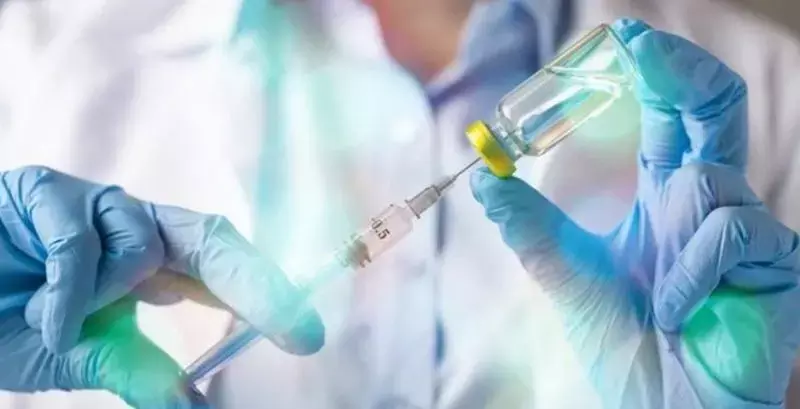- Home
- Medical news & Guidelines
- Anesthesiology
- Cardiology and CTVS
- Critical Care
- Dentistry
- Dermatology
- Diabetes and Endocrinology
- ENT
- Gastroenterology
- Medicine
- Nephrology
- Neurology
- Obstretics-Gynaecology
- Oncology
- Ophthalmology
- Orthopaedics
- Pediatrics-Neonatology
- Psychiatry
- Pulmonology
- Radiology
- Surgery
- Urology
- Laboratory Medicine
- Diet
- Nursing
- Paramedical
- Physiotherapy
- Health news
- Fact Check
- Bone Health Fact Check
- Brain Health Fact Check
- Cancer Related Fact Check
- Child Care Fact Check
- Dental and oral health fact check
- Diabetes and metabolic health fact check
- Diet and Nutrition Fact Check
- Eye and ENT Care Fact Check
- Fitness fact check
- Gut health fact check
- Heart health fact check
- Kidney health fact check
- Medical education fact check
- Men's health fact check
- Respiratory fact check
- Skin and hair care fact check
- Vaccine and Immunization fact check
- Women's health fact check
- AYUSH
- State News
- Andaman and Nicobar Islands
- Andhra Pradesh
- Arunachal Pradesh
- Assam
- Bihar
- Chandigarh
- Chattisgarh
- Dadra and Nagar Haveli
- Daman and Diu
- Delhi
- Goa
- Gujarat
- Haryana
- Himachal Pradesh
- Jammu & Kashmir
- Jharkhand
- Karnataka
- Kerala
- Ladakh
- Lakshadweep
- Madhya Pradesh
- Maharashtra
- Manipur
- Meghalaya
- Mizoram
- Nagaland
- Odisha
- Puducherry
- Punjab
- Rajasthan
- Sikkim
- Tamil Nadu
- Telangana
- Tripura
- Uttar Pradesh
- Uttrakhand
- West Bengal
- Medical Education
- Industry
Human growth hormone therapy may increase risk of proximal tibial physeal avulsion fractures

Human growth hormone therapy may increase the risk for proximal tibial physeal avulsion fractures suggests a new study published in the Journal of Bone and Joint Surgery.
Published literature describes slipped capital femoral epiphysis as a complication of recombinant human growth hormone (rhGH) therapy that may be related to decreased physeal strength. The purpose of the current investigation was to utilize a case-control study design to determine whether a greater proportion of pediatric patients sustaining physeal avulsion fractures of the proximal tibia were undergoing rhGH therapy at the time of injury compared with a cohort of matched controls. A case-control design study design was utilized. Patients 4 to 18 years of age with proximal tibial physeal avulsion fractures (cases) or midshaft tibial fractures (controls) at our institution from February 1, 2016, to May 4, 2023, were identified. Cases and controls were matched 1:1 based on age (within 1 year), sex, and body mass index (within 3 kg/m2). A total of 132 patients were included in the analysis (mean age, 13 ± 2 years). rhGH exposure was compared using conditional logistic regression with Firth correction. Results: They found that 11% of the patients with a proximal tibial physeal avulsion fracture were on rhGH therapy at the time of injury compared with 0% of patients with midshaft tibial fractures There was no significant difference in the proportion of sports-related injuries between cases (70%) and controls (67%). Among subjects with proximal tibial avulsion fractures, the proportion requiring surgery did not differ significantly between patients receiving and those not receiving rhGH therapy. This study demonstrates that the proportion of subjects who sustained proximal tibial physeal avulsion fractures and were receiving recombinant human growth hormone therapy at the time of injury was significantly greater than that of an age, sex, and body mass index-matched control group with midshaft tibial fractures (11% versus 0%, respectively, representing 15-times greater odds of exposure). This quantifies a previously unreported serious orthopaedic complication associated with rhGH therapy.
Reference:
Beber, Samuel A. MSc1,2; Gross, Preston W. BS3; Nichols, Erikson BS4; Green, Daniel W. MD, MS1; Fabricant, Peter D. MD, MPH1, a. Strong Association Between Growth Hormone Therapy and Proximal Tibial Physeal Avulsion Fractures in Children and Adolescents: A Case-Control Study. The Journal of Bone and Joint Surgery ():10.2106/JBJS.23.00741, December 21, 2023. | DOI: 10.2106/JBJS.23.00741
Keywords:
growth hormone therapy, proximal tibial physeal, avulsion fractures, Beber, Samuel A. Gross, Preston, Nichols, Erikson, Green, Daniel W, Fabricant, Peter D, the journal of bone and joint surgery, tibial fractures, human growth hormone, hormone therapy, hospital for special surgery
Dr. Shravani Dali has completed her BDS from Pravara institute of medical sciences, loni. Following which she extensively worked in the healthcare sector for 2+ years. She has been actively involved in writing blogs in field of health and wellness. Currently she is pursuing her Masters of public health-health administration from Tata institute of social sciences. She can be contacted at editorial@medicaldialogues.in.
Dr Kamal Kant Kohli-MBBS, DTCD- a chest specialist with more than 30 years of practice and a flair for writing clinical articles, Dr Kamal Kant Kohli joined Medical Dialogues as a Chief Editor of Medical News. Besides writing articles, as an editor, he proofreads and verifies all the medical content published on Medical Dialogues including those coming from journals, studies,medical conferences,guidelines etc. Email: drkohli@medicaldialogues.in. Contact no. 011-43720751


